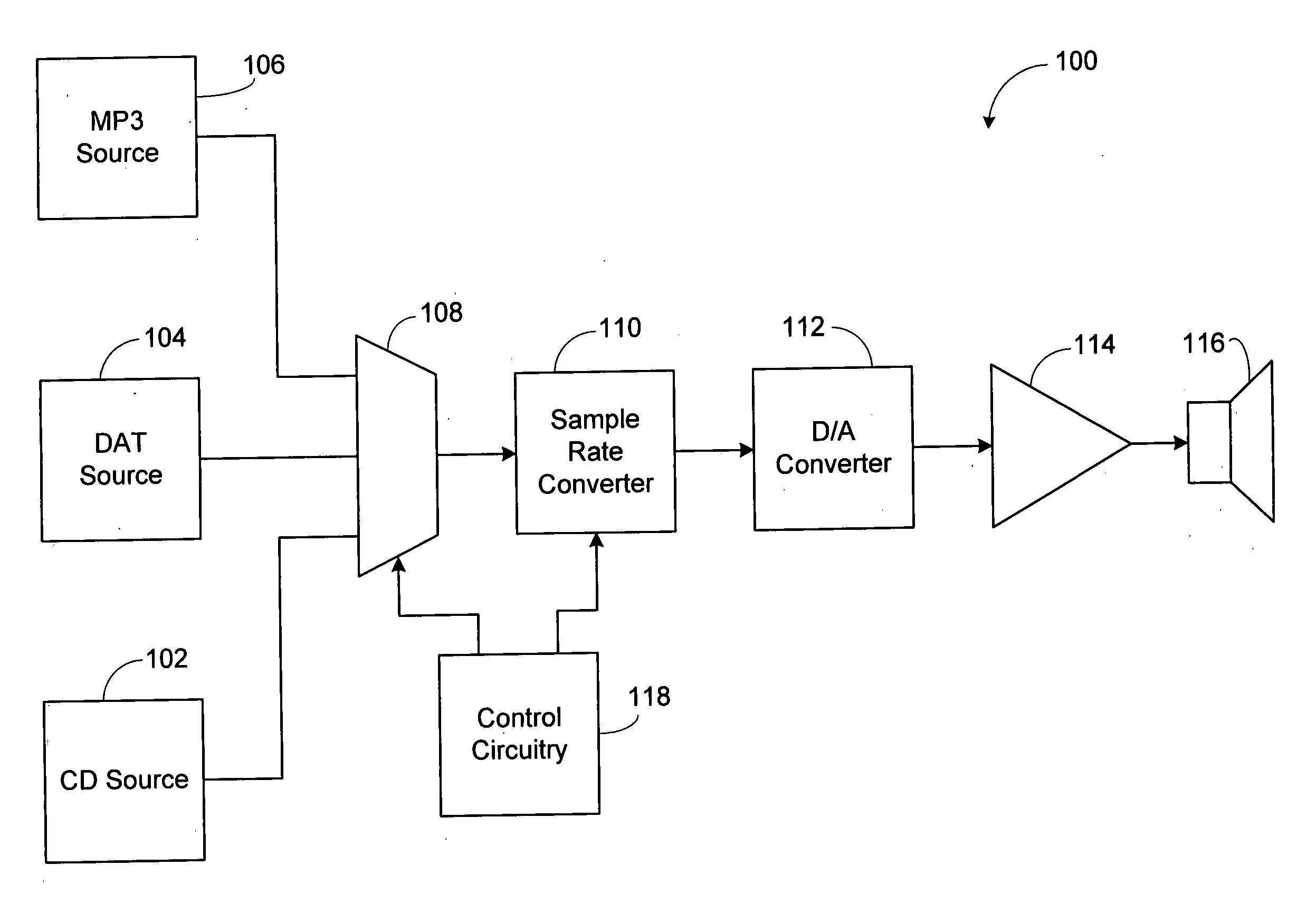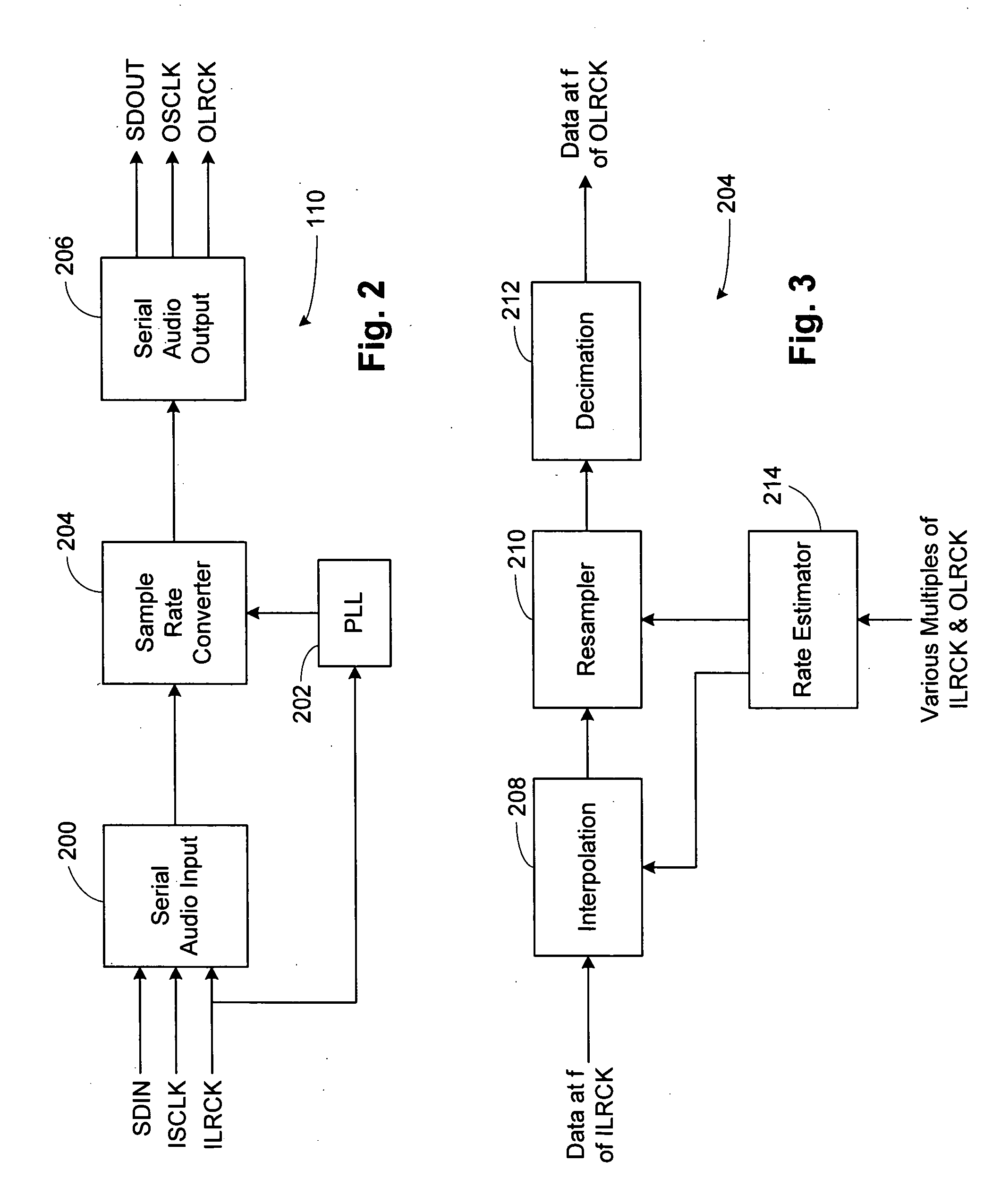Digital adaptive hysteresis system
- Summary
- Abstract
- Description
- Claims
- Application Information
AI Technical Summary
Benefits of technology
Problems solved by technology
Method used
Image
Examples
Embodiment Construction
[0013]FIG. 1 illustrates a simplified version of an exemplary audio system, which is capable of receiving signals from three digital audio sources and providing an audio output. For example, a first source is a Compact Disk (CD) source 102. A second source is a Digital Audio Tape (DAT) 104. The third illustrated source is an MP3 source 106. The CD source 102 will have the conventional CD sampling rate of 44.1 kHz, while the DAT source will have its conventional sampling rate of 48 kHz. An MP3 source may have many different sampling rates, but, in this example, an exemplary rate of 192 kHz is used. The outputs from each of these sources 102, 104 and 106 are provided as inputs to a multiplexer 108. The multiplexer 108 selects which of the sources are going to be provided to a sample rate converter 110. The sample rate converter 110 is used to convert the incoming digital audio signal at its rate into a digital audio signal at a different sampling rate. As an example, assume an output ...
PUM
 Login to View More
Login to View More Abstract
Description
Claims
Application Information
 Login to View More
Login to View More - Generate Ideas
- Intellectual Property
- Life Sciences
- Materials
- Tech Scout
- Unparalleled Data Quality
- Higher Quality Content
- 60% Fewer Hallucinations
Browse by: Latest US Patents, China's latest patents, Technical Efficacy Thesaurus, Application Domain, Technology Topic, Popular Technical Reports.
© 2025 PatSnap. All rights reserved.Legal|Privacy policy|Modern Slavery Act Transparency Statement|Sitemap|About US| Contact US: help@patsnap.com



